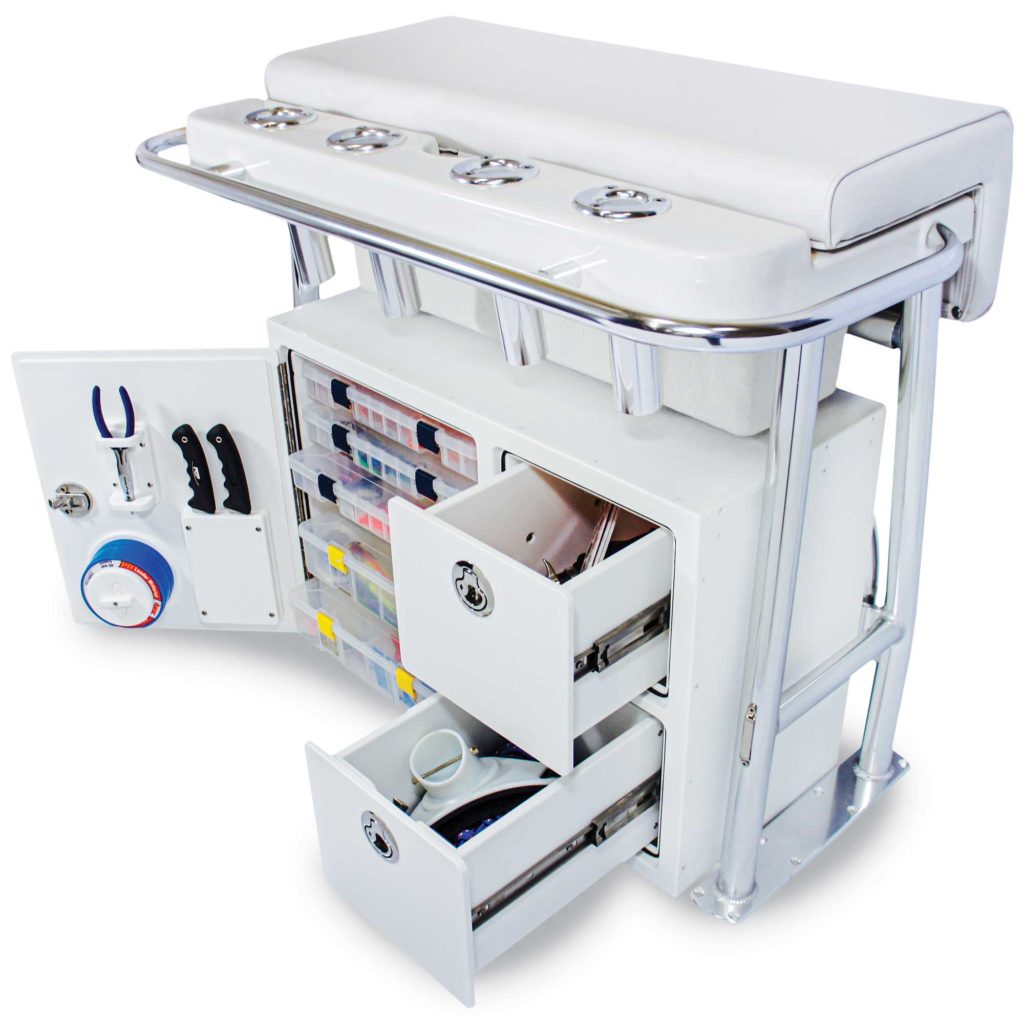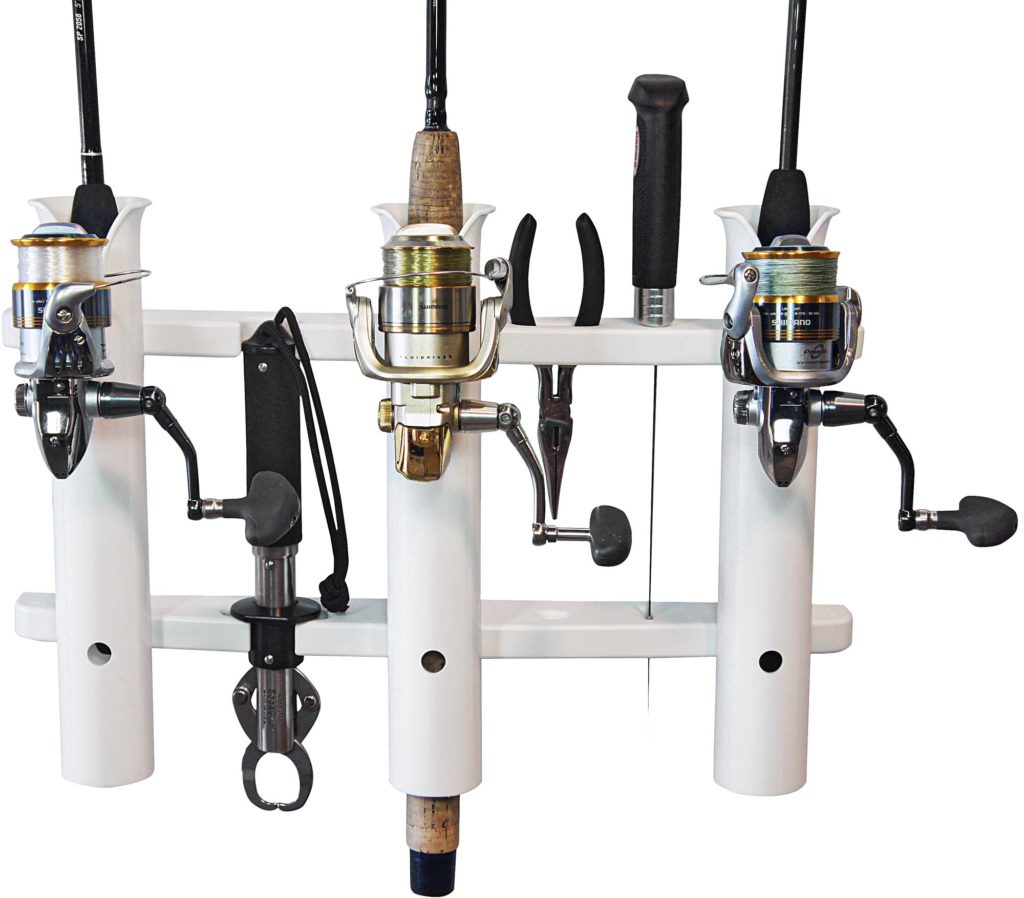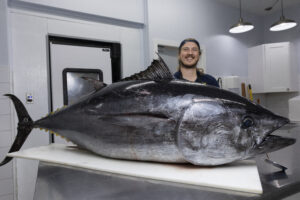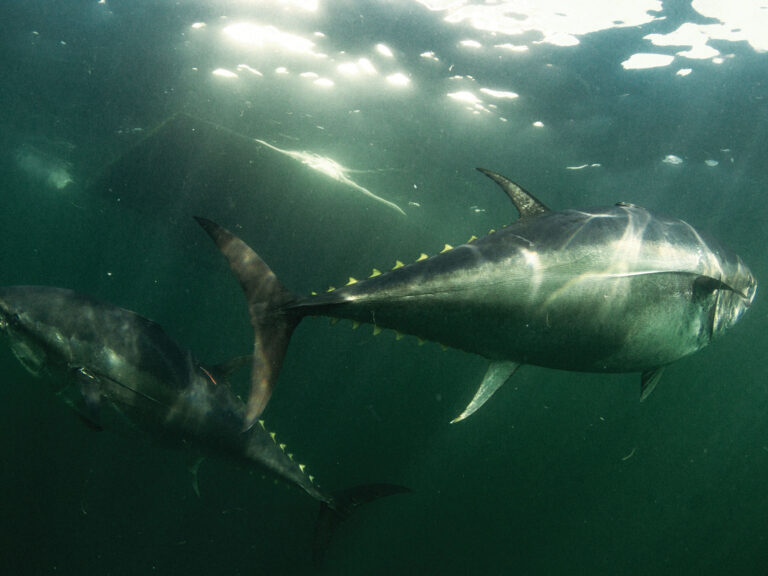
The size of the boat matters little: Anglers’ desire to enhance onboard rod and tackle storage is universal. Boatbuilders are adding more to their new models, but what about that 10-year-old boat that still runs well and would be perfect, if only it had more tackle storage or another rod rack for trolling outfits. Thankfully, there are simple solutions to this dilemma.
“There’s never enough storage,” says Andrew Brown, of Boat Outfitters. “You want to be organized and have quick access to tackle and gear, so when you get on a hot bite, you can get lines in the water quickly. Success is what happens when preparation meets opportunity, so by increasing rod and tackle storage, you make your time on the water more productive.”
Boat Outfitters builds aftermarket parts and accessories for folks looking to upgrade a boat. The parent company, Teak Isle, manufactures parts for boatbuilders, so the joint facility has multiple resources to meet a multitude of specialized needs.
“Adding extra rod storage depends greatly on the boat’s design and existing space. It’s the same story for tackle storage,” Brown explains. “For example, one of our bestselling products is a free-standing tackle-storage unit designed to fit under leaning posts, in place of the usual cooler. Customers can opt for drawers or tackle tray racks, and tool racks and leader holders can also be added. It offers a great combination of stowage space and organization to make things easier on the water.”
Brown says Boat Outfitters has more than 150 pre-engineered designs ready to fabricate to order. He suggests visiting the company’s website (boatoutfitters.com) to get a feel for possible options before calling the customer service department (866-633-7961). Their experts can then suggest adjustments to better fit the desired application, such as turning the trays, adding a cover latch on top, expanding the frame to cover existing holes, and more.
“We have 15 full-time engineers with access to 3D models and routers, the same team that makes original parts for boatbuilders,” Brown adds. “The majority of our units are made with King Starboard, but we also incorporate acrylic in some applications to match the finish or gelcoat. For instance, five different shades of white are available. You can save money if you use a pre-existing design, however we also have the capability of making that dream, fully customized box.”
Jason Greene runs Gulfstream Services, a marine service company in Orange Beach, Alabama. The company specializes in systems installations and retrofits on larger sport-fishers, but Greene has several insightful suggestions for do-it-yourselfers who want to add more storage with units from Boat Outfitters or others.
“I’d start by making a template,” he says. “A paper cutout or a cardboard box will allow you to move it around before cutting. That way you can see what works and what doesn’t. Check if it will block access or hinder movement, and those sort of things.
“The next step is knowing what you’re getting into. Before you cut into a console or gunwale, figure out what’s behind or below it. Are there wires, plumbing or insulation you’ll have to contend with or replace? Make sure before you start cutting or drilling.”
Careful measurements are critical for both the replacement component and the gear it will house. Will the new rod rack stick out too far and impede transit to the bow? Will the tips of the rods you place on the rack clear the T-top? Is there enough room for the doors of the new tackle-storage unit to swing fully open? Those are factors to consider with projects of this type.

Structural integrity is another important consideration. The rod rack or storage box needs to fit snugly into an existing space, otherwise reinforcements might be necessary. For reinforcement or to fill a void, Greene says fiberglass or composite materials offer the most strength with minimal added weight. Metal shouldn’t be used because of corrosion issues, and two-part expanding poly foam is difficult to contain and will eventually absorb water, so it’s not a good option either.
Fastening the parts is equally essential. The strongest connection would be a fiberglass bond, followed by through-bolting (if accessible), and finally self-tapping screws. The chemical composition of King Starboard will not adhere to any caulk or 5200 compound, so careful measurements and a tight seal are again paramount.
“If the parts are built to tight tolerances and your measurements are accurate, it’s simply a matter of setting the new rod rack or storage box in place, and permanently fastening it,” Greene explains. “It’s not too difficult. Although major structural changes might require more expert help.”
Increasing your boat’s rod or tackle storage is not an unrealistic modification. With the right planning and measurements, the only limiting factor is your budget.









